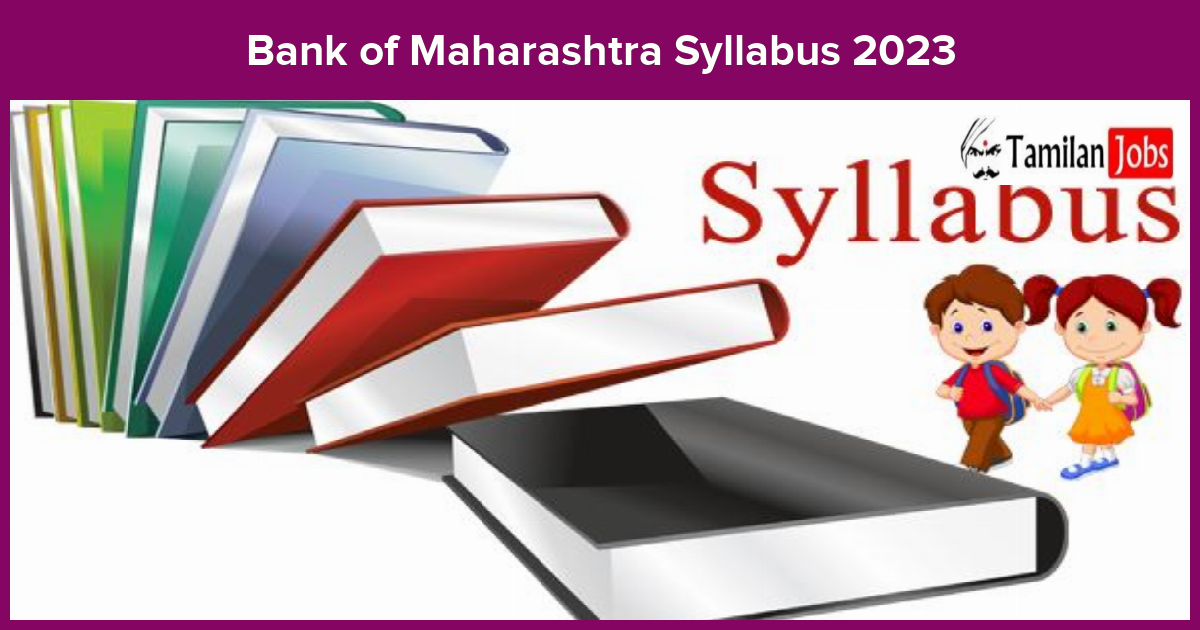Bank of Maharashtra Syllabus 2023 Check Exam Pattern Here : The Bank of Maharashtra released the BOM AGM Officers, Chief Manager, Generalist Officer, Forex/ Treasury Officer Syllabus 2023 and BOM Exam Pattern for AGM Officers, Chief Manager, Generalist Officer, and Forex/ Treasury Officer posts 2023. The officials of BOM going to conduct the AGM Officers, Chief Manager, Generalist Officer, and Forex/ Treasury Officer Exam 2023. Those eligible candidates who were waiting for BOM Posts can download it from the official website @ bankofmaharashtra.in. For the sake of Aspirants, we had given a BOM Syllabus and Exam Pattern 2023 below this section.

bankofmaharashtra.in Syllabus 2023 – Details
| Bank of Maharashtra Exam Pattern 2023 | |
|---|---|
| Organization Name | Bank of Maharashtra |
| Post Name | AGM Officers, Chief Manager, Generalist Officer, Forex/ Treasury Officer |
| Category | Syllabus |
| Selection Process | Online Examination and Interview |
| Official Site | bankofmaharashtra.in |
Bank of Maharashtra Exam Pattern 2023
Officer Scale IV, V, and Forex/ Treasury Officer
| Exam Name | No. of Questions | Max. Marks |
| Professional Knowledge | 50 | 100 |
| Total | 50 Questions | 100 Marks |
Time Duration: 75 Minutes
Scale II & III
| Test Name | No. of Questions | Duration | |||
| English Language | 30 | 20 Minutes | |||
| Quantitative Aptitude | 30 | 20 Minutes | |||
| Reasoning Ability | 30 | 20 Minutes | |||
| Professional Knowledge | 60 | 60 minutes | |||
| Total | 150 Questions | 02 Hours | |||
BOM Syllabus 2023
English Language
- Para Jumbles
- Fill in the Blanks
- Para/Sentence Completion
- Cloze Test
- Reading Comprehension
- Error Detection
- Sentence Improvement
- Sentence Correction
Reasoning Ability
- Puzzles
- Inequalities
- Syllogism
- Alphanumeric Series
- Distance and Direction
- Verbal Reasoning
- Input-Output
- Data Sufficiency
- Seating Arrangements
- Blood Relations
- Order and Ranking
Quantitative Aptitude
- Number Series
- Time and Distance
- Probability
- Relations Simple and Compound Interest
- Permutation and Combination
- Average Profit and Loss Ratio and Proportion Work
- Data Interpretation
- Simplification
- Approximation
- Quadratic Equation
- Data Sufficiency
- Mensuration
- Time and Energy